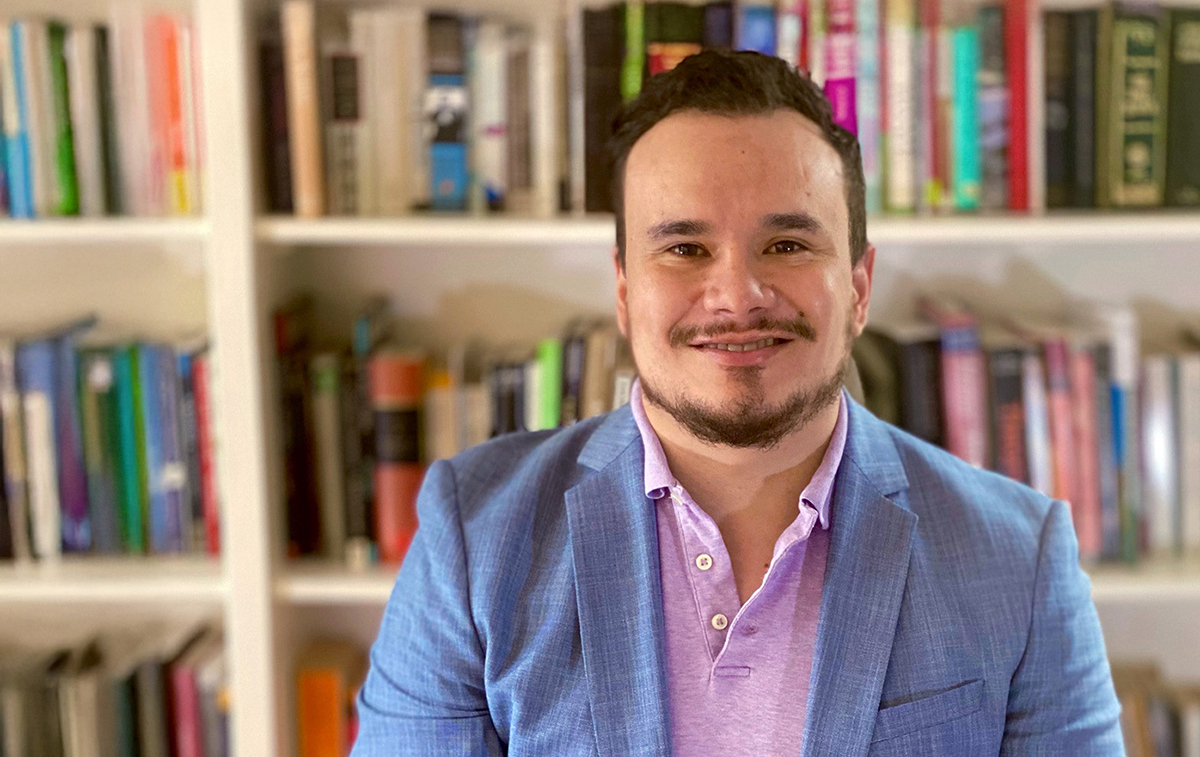Finding Purpose in a Problem
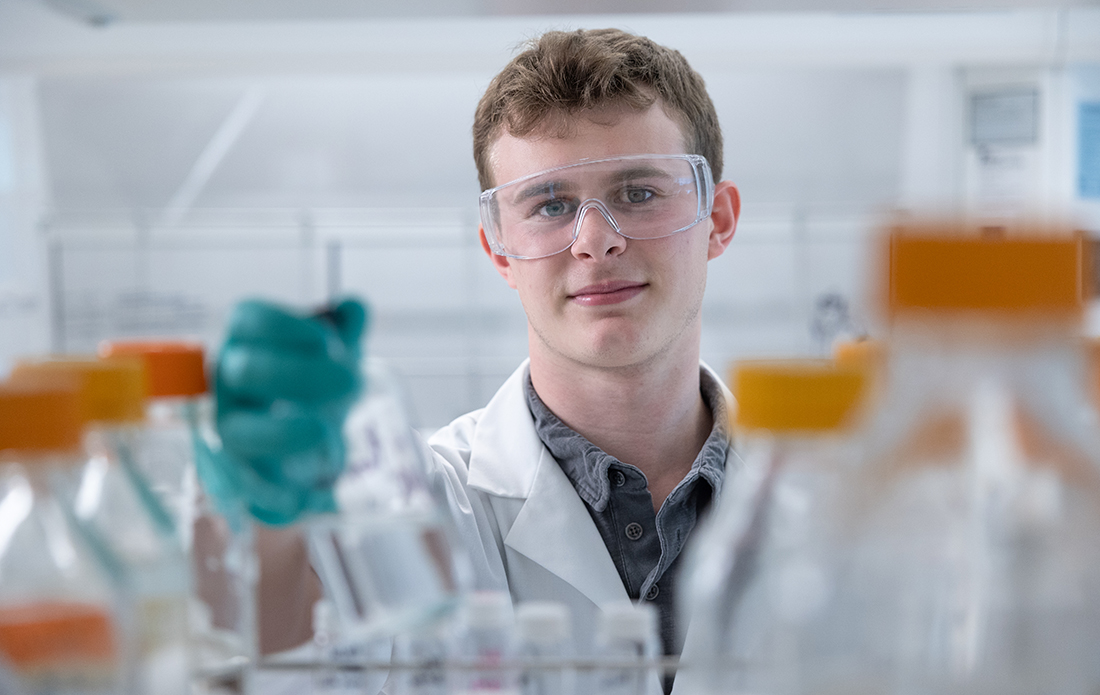
Jack Petersen’s first memories of his mother’s multiple sclerosis were mostly little things. Like when they played tee ball together and his mother would wear a cooling towel so she wouldn’t get too hot. Or on some summer days, how she couldn’t go out at all because the heat might cause a flare-up that could make her dizzy or affect her motor control.
It wasn’t until he was 10 or 11 that he started to more fully understand the chronic central nervous system disease that affected her life in fits and spurts.
Sleep is extremely important for people with relapsing-remitting multiple sclerosis and Petersen’s mom, Diane, was an OBGYN, routinely working 12 and 24-hour shifts. That meant her health often came second to her patients. Some days her MS was so bad she struggled to walk and other days, she couldn’t leave bed at all.
With his mom in pain, Petersen stepped up to take care of his two younger siblings while his dad attended to her. Petersen recalls one day coming home as a freshman in high school and his dad telling him that lesions had formed on his mother’s brain, causing her to lose her eyesight. If she rested, her condition could improve but the blindness might be permanent.
“It was extremely difficult to see my mother in a situation like that,” Petersen says. “The scariest part was you didn’t know if it was going to stay that way.”
His mom’s eyesight returned after two weeks of rest and, thanks to medical advancements, her health has stabilized in recent years and she remains a practicing physician today. But Petersen says that uncertainty never went away.
“For families of people with MS, there’s this feeling of helplessness,” he says. “It was like a roller coaster. You felt like there was nothing you could do.”
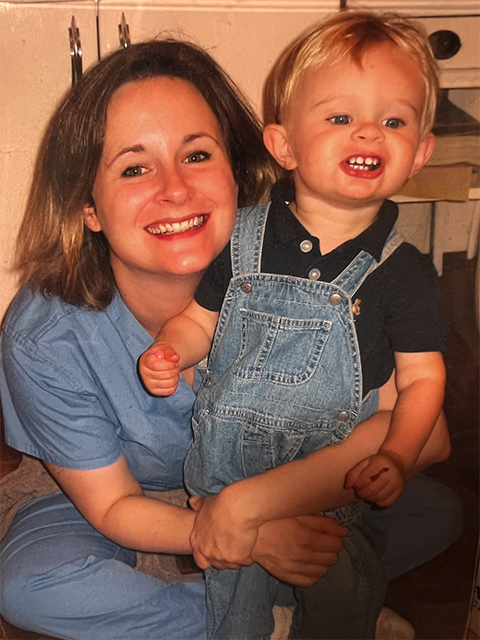
Jack Petersen (right) and his mother Diane
Petersen couldn’t control his mother’s illness, but that didn’t stop him from channeling his frustration into finding ways to help. In high school, he volunteered for the National MS Society, and by the time he got to Santa Clara University, he helped organize MS fundraisers on campus.
However, it wasn’t until his junior year at Santa Clara that he found his real purpose. Petersen had come to college as a math major before he started taking classes in chemistry.
“I didn’t have much experience with chemistry in high school, just basic courses,” he says. “But after Organic Chemistry, I became super interested in how molecules piece together almost like a puzzle. The more classes I took, the more I loved it.”
When Petersen learned how chemistry could impact MS research, he thought of the researchers responsible for the medical advancements that had helped his mother. He wanted to join them in their fight against the debilitating disease.
“I realized there's this problem I wanted to solve,” Petersen says, “and I could use my knowledge of chemistry to tackle it.”
At the center of innovation
In 2022, Petersen joined Associate Professor Amelia Fuller’s chemistry research lab at the Sobrato Campus for Discovery and Innovation. Funded by a $330,000 grant from the National Science Foundation, Fuller and her team of student researchers are analyzing how biomimetic molecules—or artificial molecules called peptoids—can stabilize gold nanoparticles.
While nanoparticles aren’t used for MS research, they are at the center of innovation in biological and environmental chemistry, and the lab work is teaching Petersen the skills he needs for his professional ambitions.
Small enough to fit inside cells, nanoparticles can be used for drug delivery and their unique optical properties can serve as sensors for environmental testing. Gold nanoparticles, in particular, are being considered for cancer treatment as their conductivity can be used to destroy tumors.
While nanoparticles have a variety of potential uses, their instability in different environments like water poses a challenge. For example, if you inject gold nanoparticles into a cancer patient, the water in the blood can break down the nanoparticles before they reach the tumor.
One solution is coating their surface in molecules like peptoids that create a protective barrier between the water.
“Peptoids are robust and resilient in a wide range of conditions,” Fuller explains. “If you put them in salts or extremely acidic or basic solutions, they don’t tend to care too much. If you put them in biological systems, they don’t break down the way biomolecules do.”
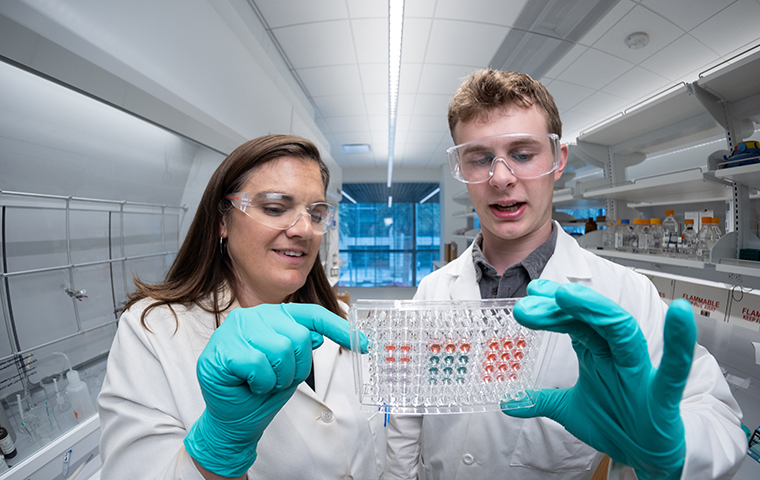
Associate Professor Amelia Fuller (left) and Jack Petersen
Peptoids are also highly customizable. Since they bind well to different types of molecules, chemists can decorate a particle with thousands of chemical entities that help it better perform different functions.
For example, if you want the peptoid to deliver a drug, you can set the molecular structure so that the drug clips off once it reaches its destination. “Or for cancer treatment,” Fuller adds, “you could attach a molecule that interacts with the receptor displayed on a cancer cell so it goes to the cancer cell instead of a regular cell.”
Petersen and his fellow student researchers are focused specifically on resiliency, testing different artificial molecular structures in specific environments. For example, if one structure proves more resilient than another, they examine the chain to determine why and then try a different combination to make it even stronger.
“If you have a small change that greatly affects the stability, you’d expect that particular piece of the chain is very important for modulating stability,” Petersen explains.
Research like this can be slow, he says, but the student researchers have already had promising results, including one test over the summer that revealed five extremely resilient residues.
“To have that kind of big breakthrough, that was really big and exciting,” Petersen says. “It was the culmination of all this hard work paying off.”
‘Could I handle the possibility of failure?’
When Petersen first started considering a career in MS research, he didn’t tell his mother. At that point, he still had a lot of questions: What if he didn’t like doing research full-time? What if his grades aren’t good enough?
“Could I handle the possibility of failure in a field that I am so personally attached to?” he asked.
Petersen calls his mom “an inspiration.” The work she does as an OBGYN is why he got into science to begin with. If he failed or decided to switch fields, he was worried it might disappoint her.
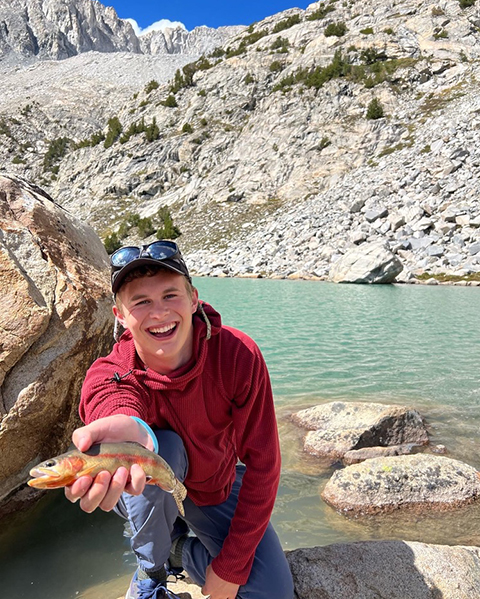
Jack Petersen fly fishing in the Inyo National Forest
The pressure and expectations he had built up in his head quickly evaporated when he joined Fuller’s lab. Instead of pressure, he found mentorship and support. Fuller views the lab as an extension of the classroom, focused on teaching and skill building. The student researchers he worked with reveled in each other’s successes.
“Sometimes people think lab work is this foreign or scary thing. But it’s all just learning and I think that’s cool.”
Petersen also says he found balance in his life. In the lab, he was doing meaningful work but it wasn’t all-consuming. Fuller still made sure he had time for weekend fly fishing trips in the Sierra Nevada mountains and to participate in clubs he was interested in like Into the Wild.
More than anything, he felt confident. So much so that he decided to pursue a Ph.D. in chemistry and a career in MS research.
When it came time to tell his mom about his decision in mid-July, he realized he never had anything to worry about. His mother told him she was happy for him, not because of what he’d chosen to do, but because it was making him happy.
“I think she is most proud of the fact that I found a way to take what I love and use it to make the world a better place,” Petersen says. “There is a lot of work to be done still, so I think my family is just really excited to see where this will all take me.”
The vision of the Gerald and Sally DeNardo Science Scholars program is to support the undergraduate research experience of outstanding science students with Santa Clara University faculty mentors. Scholars receive academic year and summer research and supply awards. The program is funded through a generous endowment created by Gerald and Sally DeNardo.

